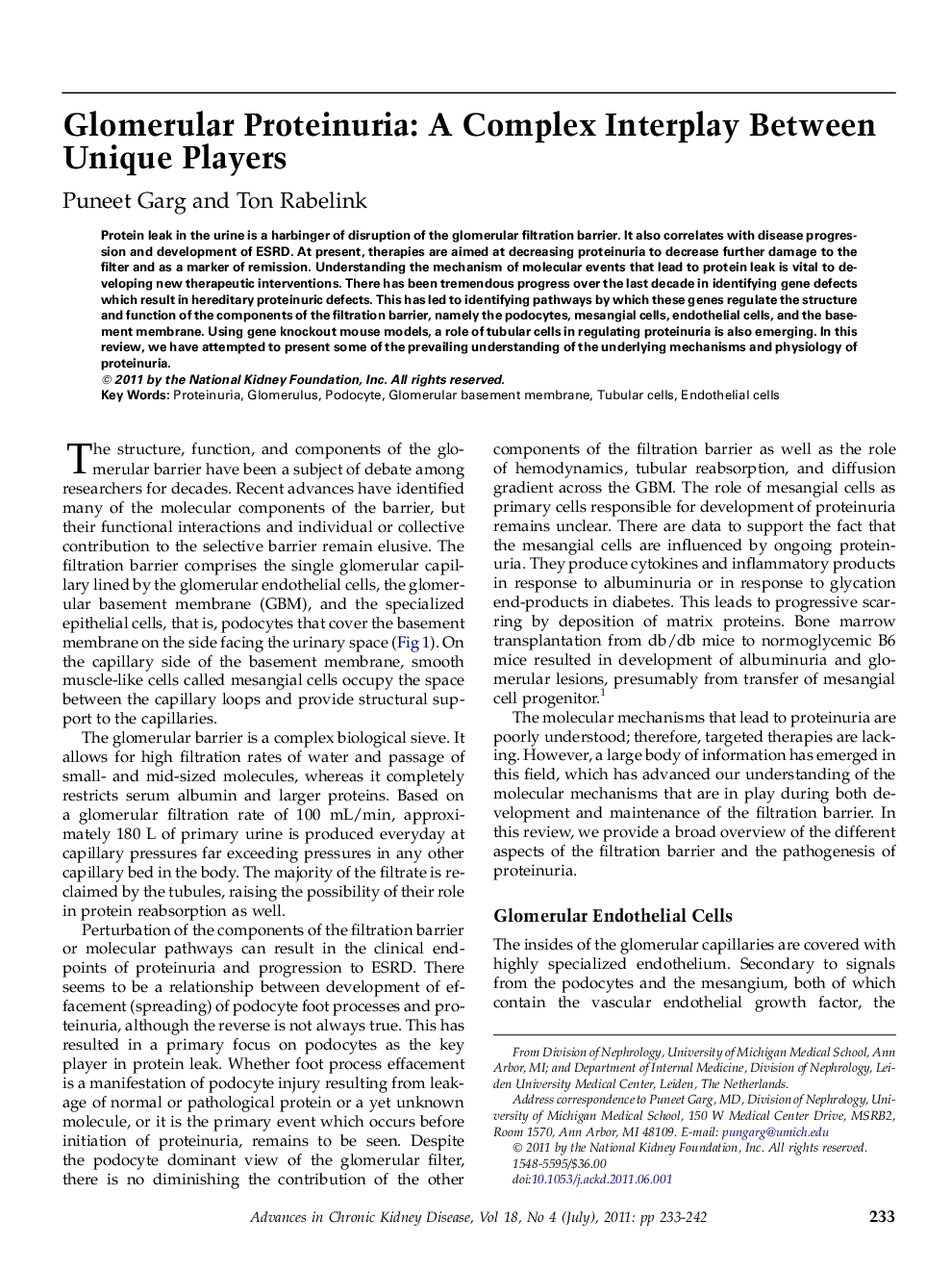| Article ID | Journal | Published Year | Pages | File Type |
|---|---|---|---|---|
| 3846592 | Advances in Chronic Kidney Disease | 2011 | 10 Pages |
Abstract
Protein leak in the urine is a harbinger of disruption of the glomerular filtration barrier. It also correlates with disease progression and development of ESRD. At present, therapies are aimed at decreasing proteinuria to decrease further damage to the filter and as a marker of remission. Understanding the mechanism of molecular events that lead to protein leak is vital to developing new therapeutic interventions. There has been tremendous progress over the last decade in identifying gene defects which result in hereditary proteinuric defects. This has led to identifying pathways by which these genes regulate the structure and function of the components of the filtration barrier, namely the podocytes, mesangial cells, endothelial cells, and the basement membrane. Using gene knockout mouse models, a role of tubular cells in regulating proteinuria is also emerging. In this review, we have attempted to present some of the prevailing understanding of the underlying mechanisms and physiology of proteinuria.
Related Topics
Health Sciences
Medicine and Dentistry
Nephrology
Authors
Puneet Garg, Ton Rabelink,
